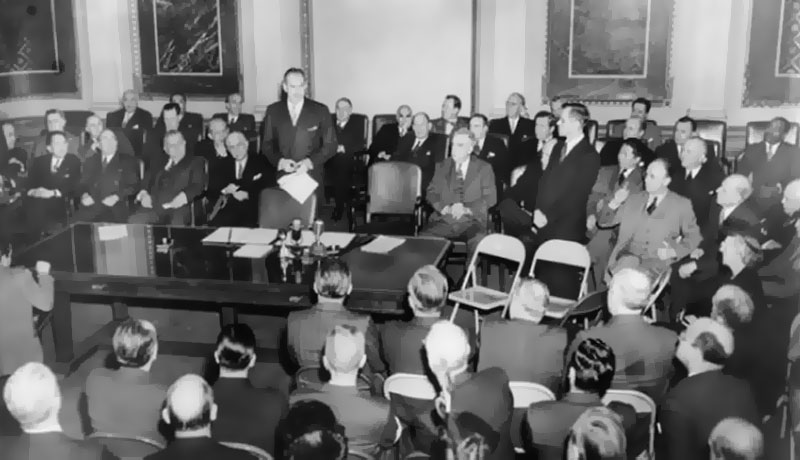The Bretton Woods System is the monetary and exchange rate management system. Representatives of 45 major economies met at Bretton Woods, USA, in July 1944 to finalize a new Exchange Rate System based on the stability and flexibility to be universally implemented after the Second World War.
Deliberation during this meeting resulted in the formation of two international multi-lateral institution s namely.
- International Monetary Fund (IMF)
- International Bank of Reconstruction and Development (IBRD) which is also known as World Bank
The IMF was given the mandate to establish a suitable exchange rate system. The Fixed Exchange Rate System proposed by them was implemented in 1946. The main features of this system were as follows:
- In addition to gold, the US Dollar (USD) was to be given the status of Universal Reserve Assets. This means that in addtion to gold reserves, countries could issue domestic money against USD reserves. The value of USD was fixes at 1 ounce of gold = USD 35.
- The US Federal Reserve Bank provided an unconditional guarantee to buy and sell unlimited quantity of gold at this price. This was called the Gold Convertibility Clause.
- No other country was required to provide for redemption of its currency against gold nor were they required to fix an official gold price.
- Each member country was required to fix Parity Value for its currency against USD.
- (The Process of fixing the value for a currency as a multiple of another currency is called as pegging. The actual rate or multiple is called Parity. The equality between gold, USD and domestic currency was called Par Value Mechanism.)
- The USD functioned as the universal vehicle currency. All currencies were pegged to USD at fixed parity therefore their cross relationship were also constant.
Example
Parity 1 USD = DEM 1.75
Parity: 1 USD = GBP 0.50
Therefore, 0.50 GBP = DEM 1.75
Therefore, 1 GBP = DEM 1.75 / 0.50 = DEM 3.50
This cross rate would remain fixed and operate within the permitted variation range of (+/-) 1% from the derived rate. GBP / DEM 3.5350 and 3.4650 would be the upper and lower support levels.
- Effectively every currency was redeemable in terms of USD and only USD was redeemable in terms of gold. Therefore this system was also called as Gold Exchange Standard. The USD therefor become the means of international settlement.
- Variation in the exchange rate was permitted on either side of parity in a range of (+/-) 1%.
- The extreme points of the variation zone were called Support Point or Intervention Points.
- The system introduced the concept of Central Bank intervention as a means of ensuring protection of parity rates. (Intervention means proactive participation of a Central Bank in the domestic market with the intention of influencing exchange rate movement.)
- The IMF provided a commitment to the member countries to provide assistance to countries facing temporary Balance of Payment deficits.
- In case of structural imbalances in the Balance of Payments, member countries could devalue their currencies in consultation with the IMF. On account of this flexibility, the system was also viewed as the Adjustable Peg System.
- The concept of dual exchange rates was abolished.
- All member countries accepted the supervisory authority of the IMF in regards to the exchange rate management system and the domestic foreign exchange market.
This was the first instance in history when all countries of the world voluntarily accepted to give up a part their sovereignty in connection with their foreign exchange management system and this was the Bretton Woods System.
